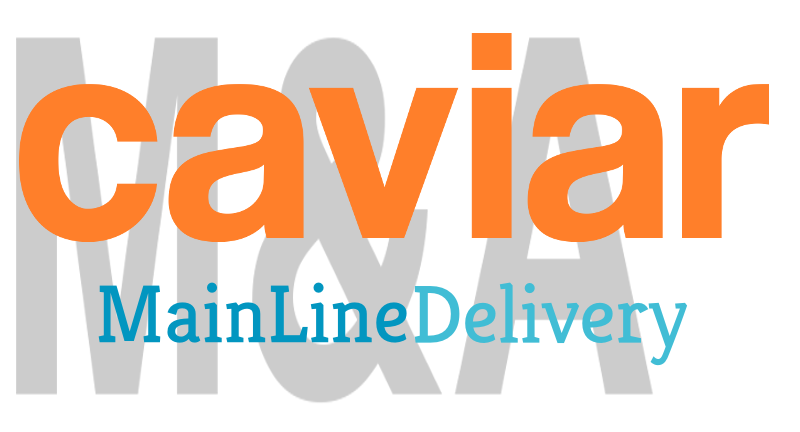By Nick Upton
Caviar’s late 2016 acquisition of Philadelphia food-delivery startup Main Line Delivery put an end cap on the M&A activities in the food-on-demand realm. And deals like it could make 2017 a banner year for M&A in the space.
Caviar, which itself was acquired by payment processor Square in 2014, acquired the regional delivery network that catered to the affluent Main Line region of Philadelphia. Terms of the deal were not disclosed.
The acquisition is one of just a few delivery-centered acquisitions for the space in 2016; which included the notable acquisition of SoCal delivery network LAbite by Grubhub for an estimated $65 million.
Both deals looked similar, both acquisition targets had carved a niche in affluent, delivery-rich communities cohabited by restaurants and the younger demographics that make up third-party delivery customers. Both acquisition targets were direct competitors in the area and both had been building a strong customer base for years. Main Line Delivery launched in 2008 and was growing throughout the Philadelphia region, partnering mostly with higher-end restaurants: the same restaurants Caviar searches for. LAbite was founded in 2001 and had made a pair of acquisitions in the industry already, including buying up a chunk of the techy Austin market when it acquired EatOutIn in 2015.
Both deals also came in a time when investment into the on-demand space was dropping precipitously. In 2016, investment in the on-demand space fell from $12.4 billion to $6.5 billion, according to venture capital information firm CB Insights.
So why would a delivery giant like Caviar or Grubhub get one of the hundreds of small- or mid-scale delivery startups when equipped with arguably better technology, more marketing clout and stronger name recognition, especially when many such firms teeter on the brink of collapse?
For one, both LAbite and Main Line Delivery were actually making money in the space. They were each growing revenue and operations organically, and without big cash infusions, they were profitable and not just paying back investors.
And like all M&A activity, there are two goals: assets or intelligence.
With the acquisition, Main Line Delivery co-founder Dan Ritterman joined Caviar as a restaurant account executive, overseeing the region.
“I think that we obviously have a great team in Philadelphia, but I know that team had an eye on the Main Line area,” said Caviar spokeswoman Catherine Ferdon.
The second important factor was all the customers in the area. Delivery customers were already accustomed to using a third-party service, and they were affluent enough to do so frequently. With still just about 12 percent of consumers actually using on-demand services and an 80 percent customer retention rate (according to research firm McKinsey), being able to acquire those sticky customers outright is a major win for a company like Caviar.
On top of all that, for brands in the third-party delivery space, it’s also a turf war. It’s no coincidence that the acquisition came just months after the August expansion into Philadelphia by Caviar rival UberEats.
Expect more M&A activity of this sort in 2017 as big players continue to expand geographically. And if investment dollars continue to flow only to the best players, regional brands may just be running on fumes, eager for someone like Grubhub, Caviar, Doordash, Postmates or UberEats to drive up to their door and honk.


